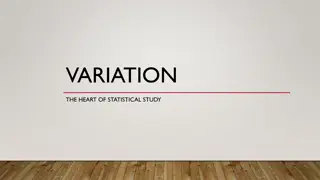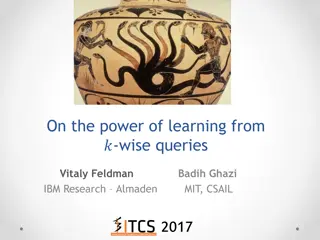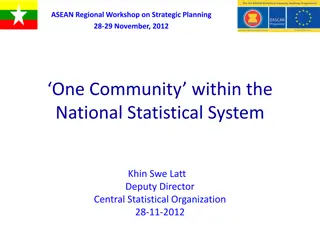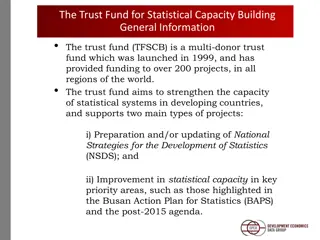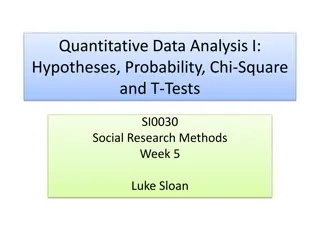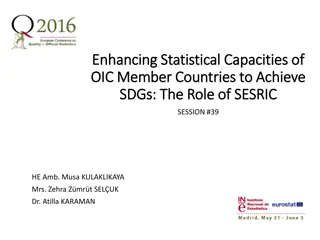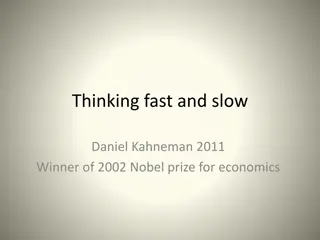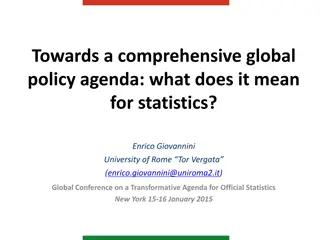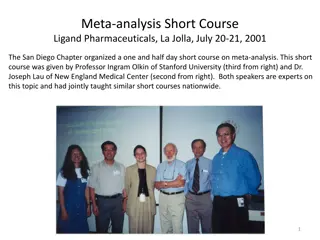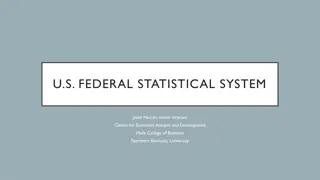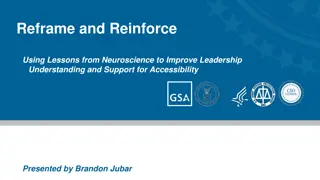Statistical Models in Neuroscience Research
Dive into the world of statistical models in neuroscience research with a focus on model introduction, fitting, and comparison. Explore the significance of these models in describing and explaining complex phenomena using examples and common models prevalent in the field.
Download Presentation

Please find below an Image/Link to download the presentation.
The content on the website is provided AS IS for your information and personal use only. It may not be sold, licensed, or shared on other websites without obtaining consent from the author.If you encounter any issues during the download, it is possible that the publisher has removed the file from their server.
You are allowed to download the files provided on this website for personal or commercial use, subject to the condition that they are used lawfully. All files are the property of their respective owners.
The content on the website is provided AS IS for your information and personal use only. It may not be sold, licensed, or shared on other websites without obtaining consent from the author.
E N D
Presentation Transcript
Model Selection Christina Maher, Blanca Piera Pi-Sunyer, Juliana Sporrer Expert: Dr Michael Moutoussis
Outline 1. Introduction to Models a. Recap: what is a statistical model and why is it useful? b. Recap: Common statistical models in Neuroscience c. Example 2. Model Fitting a. Frequentist parameter estimation b. Bayesian parameter estimation 3. Model Comparison a. Things to consider b. Measures of fit c. Group-level selection
PART I: INTRODUCTION TO MODELS Blanca Piera Pi-Sunyer
Recap: What is a statistical model? A model is a representation of an idea, an object, a process or a system that is used to describe and explain phenomena that cannot be experienced directly. - - Stands for something Describes patterns in data in reduced dimensions Friedenthal, et al. (2012). OMG Press.
Recep: Why is it useful? A Model is a Representation for a Purpose - Identifies and disentangles influences - Allows to create hypotheses - Allows to classify events All models are wrong, but some are useful
Recap: Common statistical models in Neuroscience Descriptive Models - - What do nervous systems do? Summarise data Mechanistic Models - - How do nervous systems function? Bridge descriptive data together Interpretive Models - - - Why do nervous systems operate in particular ways? Computational and information-theoretic principles Behavioural - cognitive - neural relationships Dayan & Abbott (2001). The MIT Press.
Example: Does height predict liking dogs? Dataset age, gender, height, weight, dog liking ratings Models Liking dogs ~ intercept + 1* height + 2 * age + n * n Liking dogs ~ intercept + 1 * height Liking dogs ~ intercept + 1* height + 2 * age
Part III: Model Comparison Christina Maher
What is model comparison? Determining which model best describes behavioral data - Helps uncover the mechanisms that underlie behavior - Useful when different models make similar qualitative predictions BUT differ quantitatively Example: Learning (Heathcote et al., 2000). Power law = VS Exponential function = Wilson & Collins, 2019; Farrell & Lewandowsky, 2018
Model Selection Consideration Overfitting: -model is too complex fitting both the noise and signal -overfitted models will not generalize to other datasets and do not help explain underlying behavioral mechanisms MODELLING GOAL = find the best and simplest model
Considerations for Model Characteristics -data never speaks for itself, requiring a model for explanation -we must select amongst the several existing models that explain our data -model selection = intellectual judgement + quantitative evaluation - model should be as simple as possible but no simpler -model should be interpretable -model should capture all hypotheses that you plan to test Wilson & Collins, 2019; Farrell & Lewandowsky, 2018
Measures of Fit: The Likelihood Ratio Test -Examining whether increased likelihood for a more complex model is merited by its extra parameters - Comparing a more complex model to a simpler model to see if it fits a particular dataset significantly better. Code Source: https://www.youtube .com/watch?v=xoM 1ynjQYtc -Limitations: only appropriate for nested models and depends on the null hypothesis testing approach
Measures of Fit: Akaikes Information Criterion (AIC) - - Estimates prediction error and model quality Based on information theory, AIC computes the relative amount of information lost by a given model. Less information lost = higher model quality. Accounts for the trade-off between goodness-of-fit and model complexity - Example R output: - Goal: minimize information lost. Model with the smallest AIC is the winning model. Farrell & Lewandowsky, 2018
Bayes Factor - Ratio of the likelihood of one particular hypothesis (or model) to the likelihood of another. Interpreted as a measure of model evidence or the strength of evidence in favor of one model among competing models. - Function from R library BayesFactor (computes the Bayes factors for specific linear models against the intercept-only null) Source: http://pcl.missouri.edu/bayesfactor
Measures of Fit: Bayesian Information Criterion (BIC) - - Alternative to AIC Unit Information Prior = amount of information gained from a single data point - BIC addresses problems of overfitting by introducing penalties for the number of parameters. Lower BIC value indicates lower penalty terms hence a better model. Farrell & Lewandowsky, 2018
Measures of Fit: AIC & BIC - This weighted punishment of complexity means that the BIC has a greater preference for simplicity than AIC - Particularly relevant for nested models BIC -default assumption of priors -procedure will be more conservative (prefer simpler models) than the AIC AIC -will select more complex models than the BIC Practical implication : Use both!! Farrell & Lewandowsky, 2018
Cross Validation - Resampling procedure used to evaluate a model on a limited data sample, facilitating efficient model generalization. - Testing how well your model is able to be trained by some data and then predict data it has not seen. If you trained with all data, you d be left with none for testing. - Calibration sample is used for model fitting, and the best fitting model is compared to a validation sample.
Cross Validation - Techniques Techniques: - The Holdout Method - data separated into two sets, called the Training set and Test set by a classifier. Random Subsampling -randomly splitting the data into subsets, whereby the size of the subsets is defined by the user K-Fold Cross Validation - data are split randomly into K sets, and each set j successively serves as the validation set Leave-one-out Cross Validation - each data point is successively left out of the training set and serves as the sole member of the validation set - - -
Between-Group Model Comparison Model with highest frequency (fits the most participants) in the population is best model Protected Exceedance Probabilities (PEPs) measure how likely it is that any given model is more frequent than all other models in the comparison set. Example: SPM (SPM short course for fMRI, London 2014) Bayes Omnibus Risk (BOR) Posterior probability that frequencies are different Protected Exceedance Probabilities (PEP)
Additional Resources Computational Modelling of Cognition and Behavior by Farrell & Lewandowsky Computational Psychiatry: A Primer by Peggy Series Wilson, R. C., & Collins, A. G. (2019). Ten simple rules for the computational modeling of behavioral data. eLife, 8, e49547. https://doi.org/10.7554/eLife.49547 - - - Decision-making ability, psychopathology, and brain connectivity (Moutoussis et al., 2021) https://www.sciencedirect.com/science/article/pii/S0896627321002853






